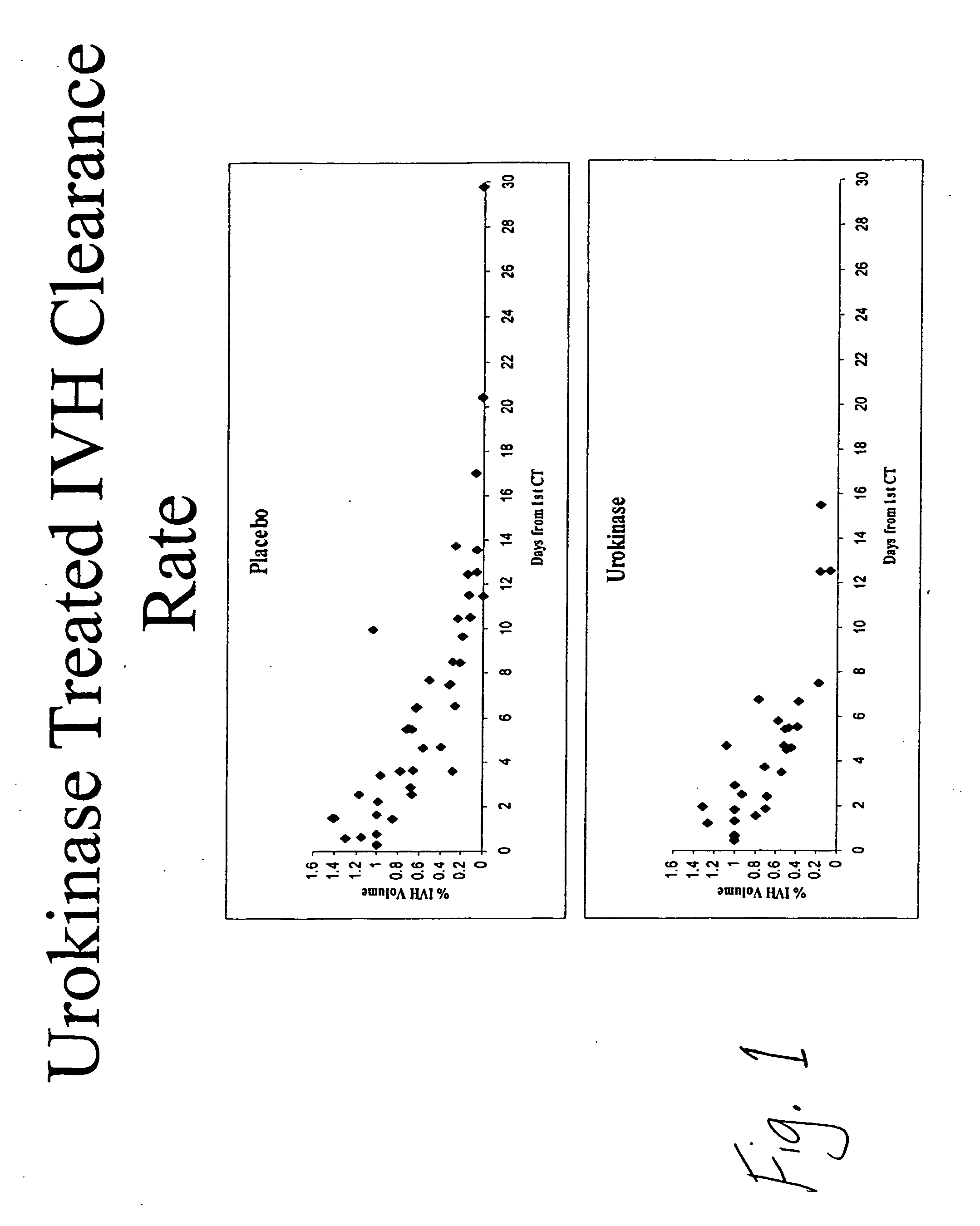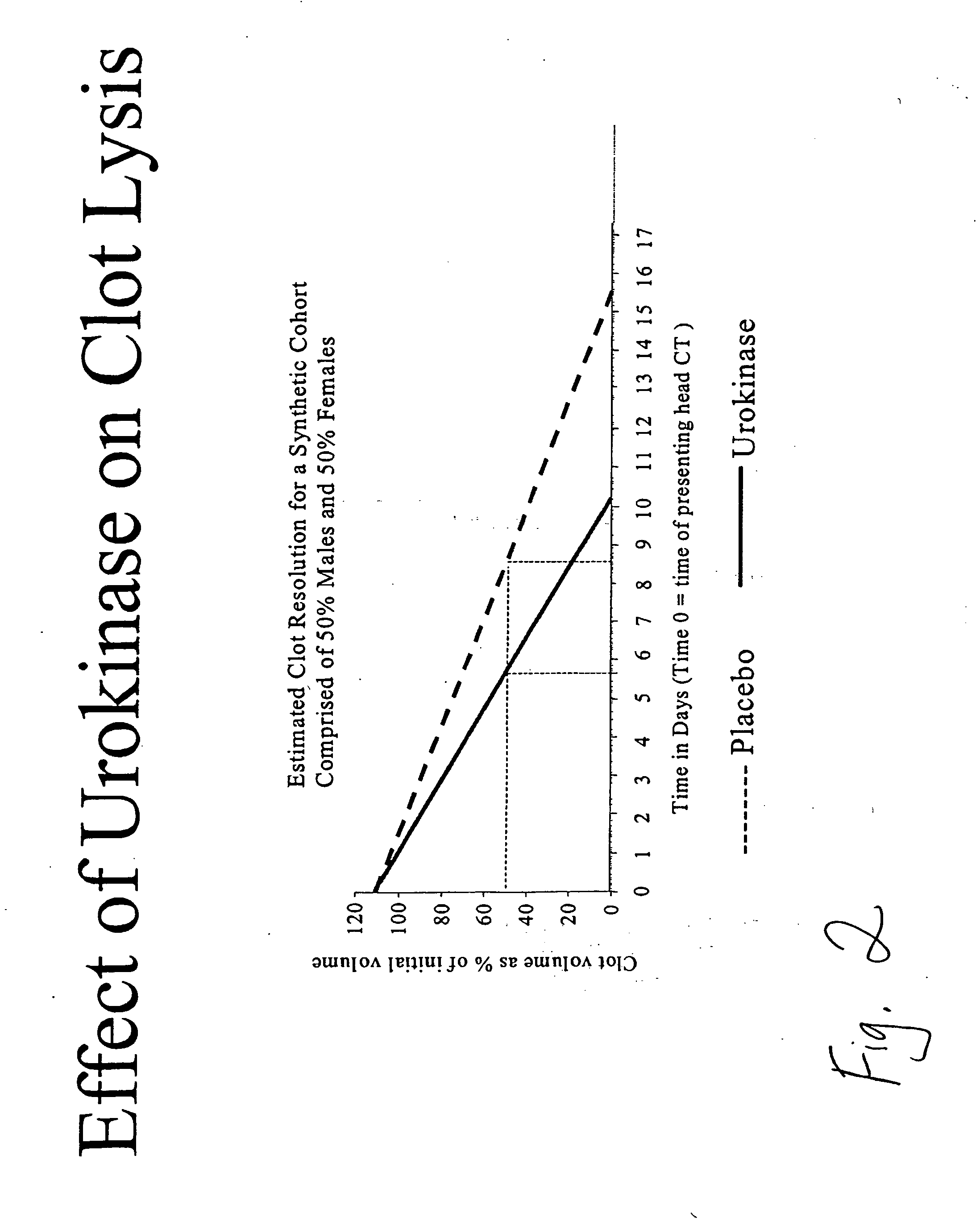Intraventricular hemorrhage thrombolysis
a technology of intraventricular hemorrhage and thrombolysis, which is applied in the direction of extracellular fluid disorder, drug composition, peptide/protein ingredient, etc., can solve the problems of ivh severely complicating intracerebral bleeding, lack of organized clinical research directed at improving ivh management, and inability to achieve the effect of improving the management of ivh, reducing the volume of ivh, and increasing mortality
- Summary
- Abstract
- Description
- Claims
- Application Information
AI Technical Summary
Benefits of technology
Problems solved by technology
Method used
Image
Examples
example 1
IVH Thrombolysis Using Urokinase
Patients and Methods
Patient Selection
[0091] Three study centers participated in the enrollment of this study population including, The Johns Hopkins University, Baltimore, Md., The Columbia-Presbyterian Medical Center, New York, N.Y., and University Hospital, Innsbruck, Austria. In addition to Food and Drug Administration Investigational New Drug (BB-IND 5459) approval, the Institutional Review Boards at each of these participating study centers approved the study prior to subject enrollment. The mortality data for the 12 patients presented herein have been previously reported as part of a larger group prior to unblinding of the study drug assignment104.
[0092] Study subjects were patients with a spontaneous intracerebral hemorrhage (ICH) and an associated intraventricular hemorrhage large enough to require external ventricular drainage (EVD) for the treatment of obstructive hydrocephalus. The decision to treat with EVD was distinct from the stud...
example 2
IVH Thrombolysis Using rt-PA
[0128] Study subjects were patients with a spontaneous intracerebral hemorrhage (ICH) and an associated intraventricular hemorrhage large enough to require external ventricular drainage (EVD) for the treatment of obstructive hydrocephalus. The decision to treat with EVD was distinct from the study protocol and was made by a treating physician prior to enrollment into the study. Therefore, no patient was exposed to the risk of EVD who otherwise would not have received EVD for conventional treatment. Patients or their family members were approached for informed consent only after EVD had been instituted.
[0129] The diagnostic head CT revealing ICH / IVH was designated the starting time point (0 hr post bleed). A head CT was performed after EVD placement (≧6 hr post bleed). Consent was obtained and randomization performed 6-12 hr post bleed, when the hematoma size was stable and ICH≦30 cc by CT. The first dose was given at 12 hours post bleed, and the second ...
PUM
| Property | Measurement | Unit |
|---|---|---|
| time | aaaaa | aaaaa |
| time | aaaaa | aaaaa |
| median volume | aaaaa | aaaaa |
Abstract
Description
Claims
Application Information
 Login to View More
Login to View More - R&D
- Intellectual Property
- Life Sciences
- Materials
- Tech Scout
- Unparalleled Data Quality
- Higher Quality Content
- 60% Fewer Hallucinations
Browse by: Latest US Patents, China's latest patents, Technical Efficacy Thesaurus, Application Domain, Technology Topic, Popular Technical Reports.
© 2025 PatSnap. All rights reserved.Legal|Privacy policy|Modern Slavery Act Transparency Statement|Sitemap|About US| Contact US: help@patsnap.com



